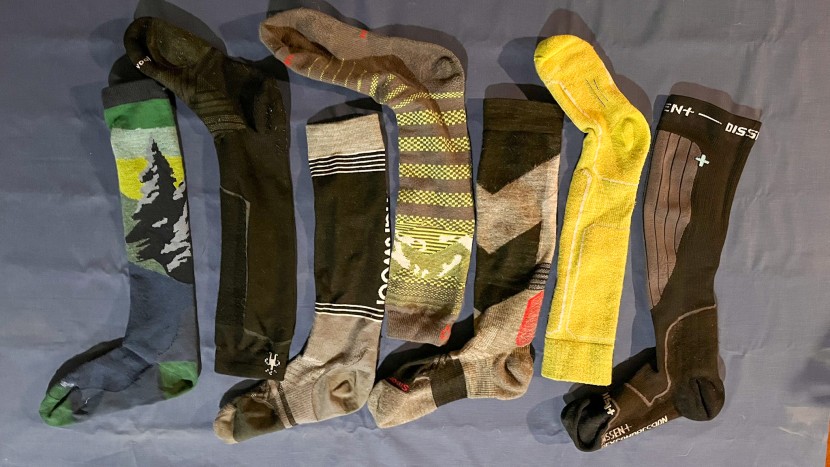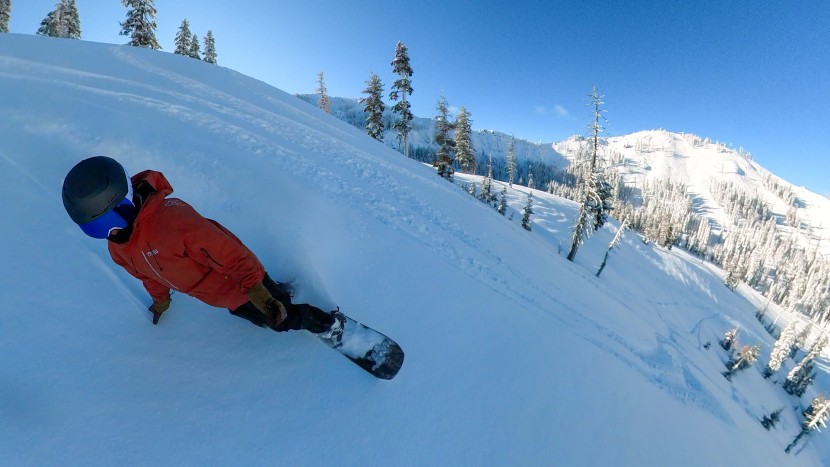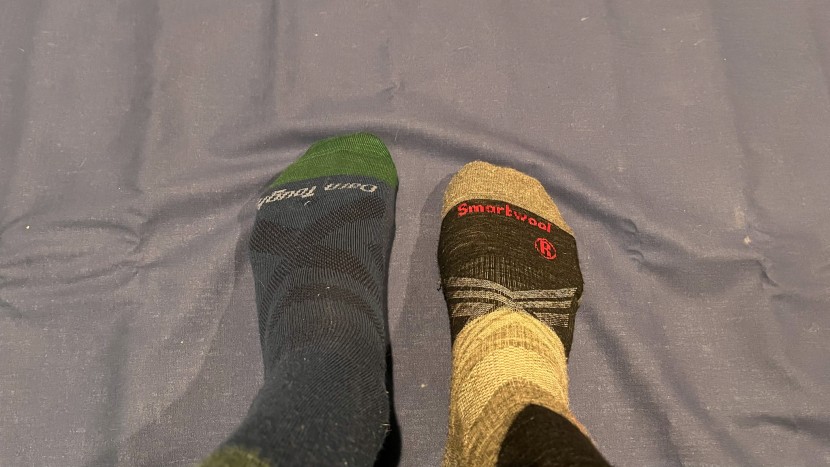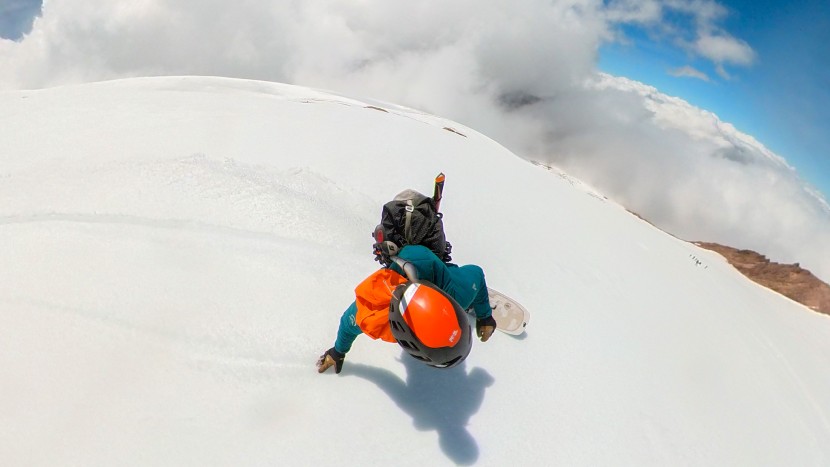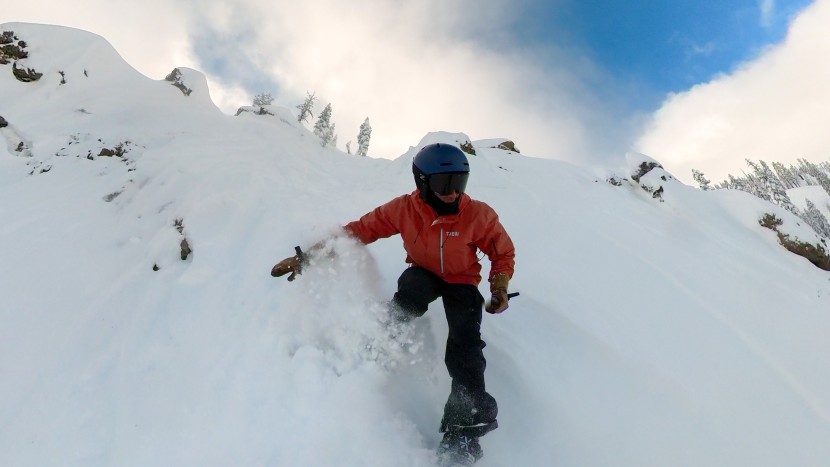We've tested socks all over North America, focusing on areas such as Alaska, Colorado, California, and Ontario. We skied down steep couloirs, skinned up 12,000-foot peaks, toured to huts, guided at the ski resort, and rode chair lifts for many collective hours. Testing comparatively while wearing a different sock on each foot, we were able to see differences in each sock. We specifically honed in on five key metrics, outlined below.
Comfort and Construction
We investigated the comfort and construction of each sock in our home and out in the field. Indoors, we looked at the construction, checking out compression zones, mesh panels, padded areas, and seam quality. In the field, we used different boots and went out for a wide variety of activities. GearLab is built upon comparative assessment; in this vein, we went out into the field with two different socks. This allowed us the opportunity for direct, side-by-side comparison. We noted any bunching issues in the fit, differences between padding versus no padding in certain areas, and the effectiveness of compression zones between different brands.
Warmth
This metric followed a similar approach. We looked at the construction of products as it relates to materials, wicking capacity, and fit within a boot. We wore two different socks outside without a boot until one foot was sufficiently colder than the other. We did something similar while on the mountain by wearing two different socks and noting the temperature differences within each when considering the overall conditions of the day. Finally, we looked at the wicking capacity, deriving information from our breathability tests while also comparing the moisture levels of each sock and our boot liner after each day.
Breathability
Breathability had an at-home component that was focused on the construction of each sock as it relates to the materials, thickness, and surface area of the mesh paneling incorporated into the design. While riding, we noted the difference between each contender. Sometimes one foot was on the brink of sweating, and another was perfectly comfortable. After riding, we compared the moisture content within each sock, the dampness of our boot liner, and the condition of our skin to evaluate how effectively each sock moved moisture through its materials.
Fit
This metric examined the quality of the fit both on our body and also in different boot types. We looked at the construction of each sock, noting the areas of compression and looseness. We compared the fit of each sock before and after use to see the impacts of moisture, which could lead to bunching later in the day. We specifically looked at the toe box, heel cup, instep, Achilles, calf area, and upper cuff.
Durability
We pay special attention to seams, high-wear areas, and pilling throughout our testing process. We then take time to look at the warranty programs for each sock company and factor that into the final score for this metric.

